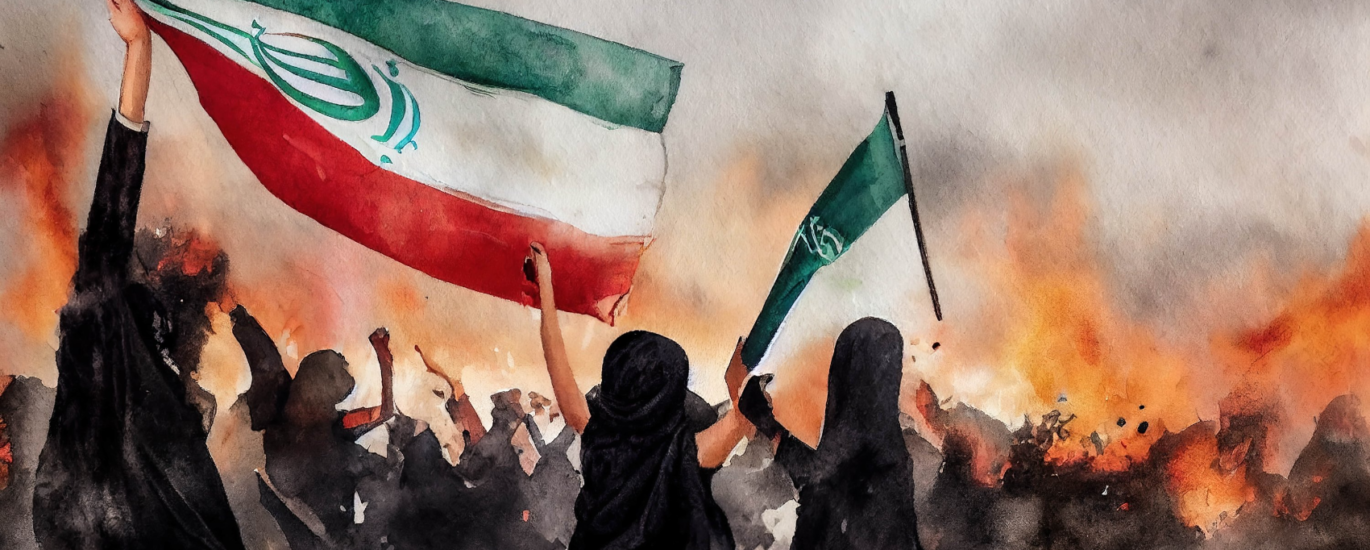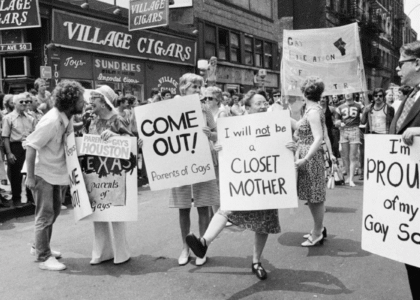“Why don’t we just stand together in solidarity? We have the numbers.
Amy is joined by Dina Asna and Saghi Saaghazadeh to discuss the ongoing revolution in Iran.
Our Guests
Dina Asna
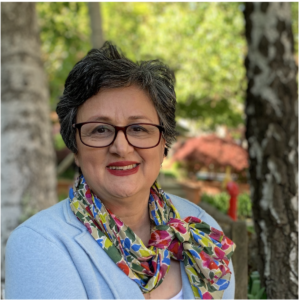
Dina Asna was born in the 1960s in Tehran, which is the capital city of Iran. She left Iran with a scholarship from the Germany embassy in the mid-1980s and then studied and worked in Germany for 21 years before moving to the US in 2015. Dina worked as a computer scientist until 2016 and then as a consultant, artist, and activist. She is the founder of a nonprofit called Iranian Women in Network, or IWIN, whose mission is empowering women through art.
Saghi Saghazadeh
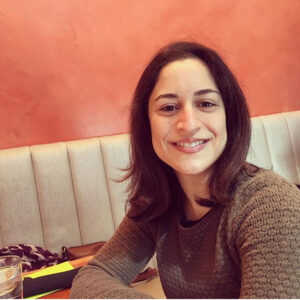
Saghi Saghazadeh was born in Tehran also, in the mid-1980s during the Iran-Iraq War. She studied polymer engineering at Tehran Polytechnic and moved to Europe for her master’s degree and PhD studies in material science and engineering. Saghi lived in France and Belgium for six years and then moved to the US after her PhD graduation. She worked at Harvard Medical School as a postdoctoral scholar and then moved to Minnesota in 2018. She currently works as a senior biologist at 3M. Saghi is passionate about women’s rights and has been an advocate of diversity and inclusion both at work and in her community. I’m so grateful to have both of you with us today, and let’s start out by talking about the history of women in Iran and some of the factors that have led Iranians to this moment. And Saghi, maybe we can start with you.
The Discussion
Saghi Saghazadeh: Sure, so if you go way back into the history of Iran, women were very prominent and had prominent roles, actually. We had women who were navy commanders if you go 2,000 years back. And our family structures were very matriarchal, but as time progressed and patriarchy diffused all over the structure of the world, women’s roles became smaller and smaller and Iranian women tried to defy this concept. I think the very first time that we hear the idea of emancipation of women in Iran is around 1848 by a woman called Táhirih Qurrat al-ʿAyn. She is the first woman who appears unveiled in public, and she goes without wearing a veil and starts talking about the advent of a new religion. It caused a lot of shock and ultimately she was sentenced to death. When they were coming to kill her she said, “you can kill me any time but you can never stop women because the emancipation of women has started.” So knowing that back in 1848 this idea was going on, we can say that the women’s rights movement and activism in Iran dates far back in our history. And this has been almost a Sisyphean struggle; women keep pushing, demanding their basic human rights, sometimes they make some gains and then they are set back, far, far away. So this has been going on and on.
Dina Asna: During the Pahlavi time, the so-called Shah time in Iran, in the time of Reza Shah, the first Pahlavi king, he came with the idea to remove this hijab… it was compulsory. He forced a law that they remove the chador and the hijab– He wanted to really give a push to society so that they could adopt more of the modern lifestyle. Until today it’s been criticized that something forced from the government to the people is not right. Still we want to give it a bit of credit because it opened up space and opportunities for women and girls to come out, to shine, to claim positions that they never had in politics, art, sports. And I have to give credit to the current ex-queen, Farah Diba Pahlavi, who was really an advocate for women’s rights, women’s activity during the Shah time. I have to say also, they definitely paved a way for whatever is happening today. Even though that work was not deep work, it was something to deepen the culture, deepen the religion, and even deepen the region… It has been a big help to Iran today. To give you a picture of life for women and girls in Iran before the revolution of 1979. We had women at the level of the minister, we had built up female athletic teams participating in worldwide competitions and they built their careers over being female athletes because we didn’t have such a thing before. We had artists– It’s funny to tell you today in Iran, since the revolution, women are not allowed to sing. You cannot have a single woman singer having a program or a concert, it’s all forbidden. Sometimes they even stop a concert because there are too many females playing in the orchestra and that’s too much for them, so they cancel everything, they send everybody home. So anyways, we had women being scientists, in nonprofit organizations and charities, and we had a choice. There were families where people chose to have the hijab or to choose to practice Islam in a more traditional way living next to each other. They were cousins, sisters, even in one family. And those who wanted to live a more modern lifestyle and be a free woman… We respected each other and each other’s choices. We had authors and poets and we could see that women can build their own voices, we had women activists. This was welcomed by the government and it was promoted and supported at that time, and it was also gradually going to impact the culture: deepen the family. They could see that they could send their daughter to the swim team and that swim team took that daughter to other cities and then to international competitions. That was, I think, the intention at the Shah time, to show and practice something and adopt a new culture. But it was not much about educating them and giving them tools. But life was honestly similar to what you see today in the US, in Western countries… very basic things. I went to school with boys and girls together; today we don’t have that. Those are simple things. And that was the time that we could decide what to wear and how to live a normal life as a woman.
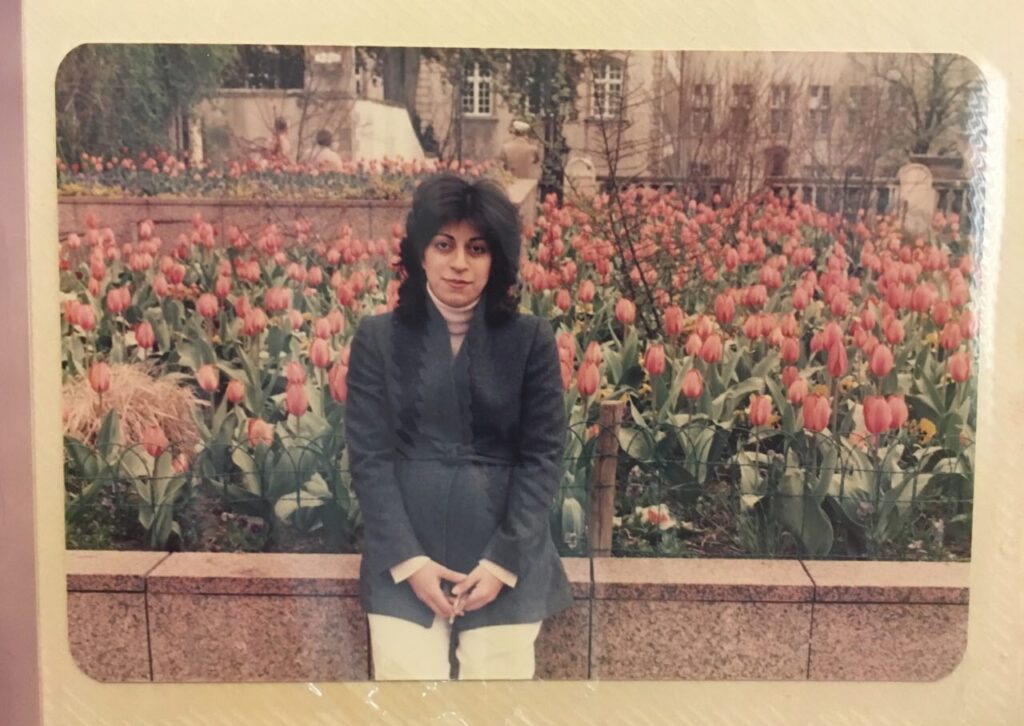
SS: I wanna picture two images for you because they are pictures I saw in one of our family photo albums. The first one, my mom is a young teenager. So you see a group of family members just picnicking outside, so my mom is wearing an oversized shirt and jeans, and there are boys around her at the time… and the fashion at that time is getting pretty close to now, like bootcut jeans and stuff like that. There are some elderly people who are sitting in that picture and they are wearing some white fabric chadors, so that’s gonna be the fabric that you would put on top of your head and it drapes down so you’re not covering any part of your face. What they’re wearing is white-ish, cream-ish, so you do not have the black. And you see one girl who is dancing, she is wearing some kind of dark mustard uniform and stockings, and there’s a guy who is jumping up and down next to them. A few pages later in that family album, I have my mom and three of her friends and their bodies are absolutely shielded inside layers and layers of fabric. So what they’re wearing is a long uniform, it goes way under their knees but it doesn’t go as low as their ankles. They are also wearing pants and shoes and a kind of scarf– and there are different types of coverings for hair. This one sits in a triangular way above your head – and it started out small and got bigger and bigger – and is wrapped around your chin. So my mom and her three friends, they look huge but at the same time very little. You’re no longer seeing a frame– I don’t want to say this, but you’re now seeing a piece of furniture. They are wrapped around a cylinder of fabric and it is pretty interesting for me how everything suddenly changed.
And as I was doing my homework for this podcast and looking around, the revolution initially started as a coalition of different groups whole idea was to topple the monarchy more for financial freedom and some political freedom, but ultimately it was overtaken by those who were more Islam-oriented, who were led by Ayatollah Khomeini, and they had a vast network through the mosques all around Iran. Because if you read different articles, there is this notion that the revolution got hijacked. Others say no, that Khomeini was always clear about his intentions, but something that isn’t clear – and for me because I was not born at that time – it’s not clear for me what happened. But ultimately it became an Islamic revolution. So 1979, around February, Iran’s king left and Khomeini came to Iran. The event that will come very soon is actually March 8th which is the International Women’s Rights Day. And exactly on March 7th, Khomeini issued his first decree. And this gives a very good idea of how the Islamic Republic started and how it pictured itself as a system initially built on oppressing women. So he said that women should be veiled when they are coming to government offices. And in his own words, “they should not come naked.” This caused serious backlash by women, many came to the streets on March 8th, 1979. And they asked for their rights because their take was hey, in the past month we have been, as sisters and brothers, side by side, some wearing hijabs and some not, and how did it change? What caused this new decree? And something that is quite interesting is how different scholars who are not necessarily religious start to minimize and normalize this decree. What they’re saying is oh, it’s just a piece of cloth, it’s just a sign to say we no longer support the monarchy because now our religion is standing against it. They’re not asking you to change the way you’re living, it’s just in government offices. It’s just a veil, you do not need to change anything else. And there is a text that I read and I will share this with you. It is very sad because a lady says…I kept looking around and I didn’t see that many men. The men that in the past few months were protesting the monarchy… and suddenly you and a bunch of your friends feel alone. Because your issue is no longer that important. There is also a woman who wrote an article and said, I was one of those who thought hey, a social revolution is way bigger than whatever they’re telling you to wear, it’s gonna be fine. But what I didn’t realize was that the person who’s telling you what to wear is the person who is going to tell you how to think. And that’s what we didn’t know; that it’s going to escalate. So ultimately the women’s march was somehow suppressed, minimized, and Ayatollah Khomeini started making different decrees. And the takeaway was: this is an Islamic Republic, and Islamic Revolution, and we are going to make the laws based on our understanding of Shi’ite law.
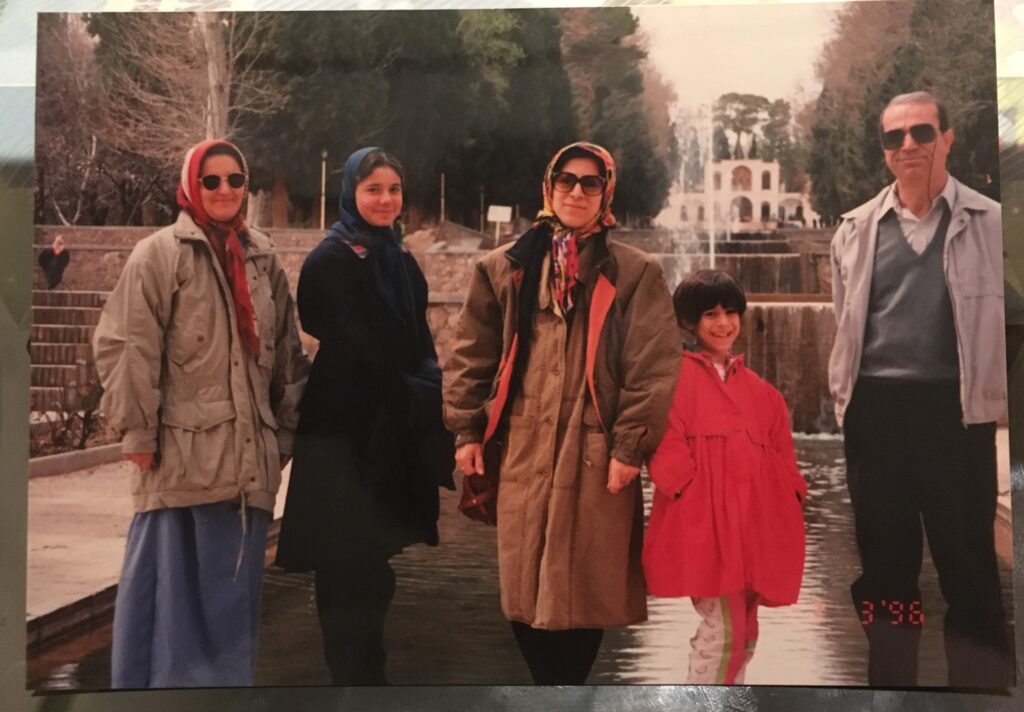
“We could have gotten in trouble for that (inappropriate hijab). We could have also gotten in trouble for me not wearing a scarf. We usually carried one in a bag, just in case someone required me to wear a scarf.”
So for example, women had the right to vote, which was not taken although Khomeini was significantly against that one too. But they took away the part that women could have high offices. For example, an Iranian woman cannot become a president. They cannot become the head of the judiciary system. They cannot become the head of the parliament. The laws relating to divorce got absolutely changed. Polygamy was authorized for women, absolutely not for women. Men can divorce women when they want, however women have to go through a very thorough process and they can ask for divorce under very special circumstances. I think something that your listeners can do is find an Iranian friend and ask them if they know a woman who went through a divorce. I think that is something that you would hear, almost every family has someone and every family has a story that gives a good idea of how difficult it has become. Women ultimately lost the guardianship of the kids. So if a woman successfully divorces, the best case scenario is the children can be in her care but the ultimate custodian of the children is always going to be the father. For example, if this child needs to receive a surgery, the father has to come and sign the form of consent. And again, this is something that some hospitals strongly impose, some don’t. Something special about the Islamic Republic is the randomness of the laws and how much you can just try to navigate your way, but the base of the law says that it’s on dads. Also women who are married need the authorization of their husbands to receive passports and also they cannot leave the country at will. So the husband can always go and demand his wife to be barred from exiting the country, at the same time, this is not the case for women. Schools got separated so boys and girls were together in preschool and then we got separated and the next time we really see each other is at universities. So even extracurricular activities are separated. I went to English classes, the swimming pool, basketball court… everything was girls only/boys only. When you enter an airport, you have an entrance for women and an entrance for men. When you go to a theater, there’s an entrance for women and an entrance for men. So there are always places where we get segregated. At universities, at the time they wanted to separate the classes and the seats between boys and girls. They were not successful in some of the big, famous universities in Iran. But honestly, we automatically sat almost in separate ways. If there are two guys and there’s a seat empty in the middle of them and there’s a seat somewhere else, I would go and sit somewhere else and live my life. Also, women cannot ride motorcycles but they can sit on the back, like, it doesn’t make sense. Absolutely not. Women cannot sing solo, as Dina said, you can hear the women’s sound as a chorus. So even if there are two women singing together but the sound seems like one, there’s going to be an issue. So I remember that there were music tapes and they would come and sell to you if you like and I was like, did they authorize this?! The laws kept closing doors and women tried to dig holes as much as they could.
DA: Saghi covered a really, really good collection of all this discrimination. One of them is also inheritance law.
SS: Inheritance law separates what a parent is leaving for a child in, let’s say, three buckets. Two go to a brother or male child. And then one portion goes to the daughter. Something that really breaks my heart is that – well this is what we learned at school, this is the content of our books, we had to learn it to heart and do exams and give seminars in classrooms – and I remember how ridiculous we thought it was, and at the same time, well this is the text of the book and you have to learn it and write it. So not only was there a break between how the society lived, but there was also a break in what I was learning and receiving in the society, whatever was available to me, and also the way my head would process it. Even students in religious families, when they would read the book they would feel like, this doesn’t make sense. However, we had to pretend that not only we understand it but we agree with it and we are strong defenders of the system. So if a parent does not assign their property to their children, automatically the state is going to impose the one-third/two-thirds law. So you have to have very good feminist brothers to give back to you what belongs to you because the state will not do that. Dina, go ahead.
DA: The worst part is the inheritance law for the moms. As a husband and wife… the husband dies and has one son and one daughter. The daughter gets the one-third, the son gets the two-thirds. What does the mom get? One-eighth. One-eighth! That is the history of how they intentionally tried to remove half of the population of all their rights and everything that they could. Just as Saghi explained, they did not just pull the chador on our heads, they wanted to remove us from society in every way possible. If you get into a marriage, you’re arrested. It’s not a marriage. If you get to a workplace, you are a second-class citizen in any degree that you have. So anyways, we want to get to the good part of it that we have today.
The laws kept closing doors and women tried to dig holes as much as they could.
I want to tell you also that definitely when you read about equal pay all over the world – I lived in Germany, Saghi was living and studying also in Europe – it’s not so much about oh, Iranians this and that…we know that in general we have a lot of work to do. But when we talk about equal pay, I couldn’t even believe that only five countries have equal pay. Even countries like the US and Germany don’t have it. And our soccer players a few years ago had to fight for it even though they are number one in the world when talking about the US. It’s everywhere. We know that. The discrimination in the workplace is everywhere: they don’t promote us, they don’t let us engage as much as we deserve, we don’t go with degrees or based on activities or engagement of a woman in a team. This is everywhere. I want to remind us that “Woman, Life, Freedom,” such a beautifully inclusive slogan started maybe in the street in Iran, but it’s really everywhere. That’s why people are so connected to it. Because everywhere in the world, not only in Afghanistan, not only in India, honestly here in the USA, in Germany, in top leading countries, women are under discrimination and we have a long way to go. We don’t forget the abortion law that we lost early this year… and this what really boils in me to talk about in every community. Because maybe today in the USA we are in the middle of those hard days. But we want to remind ourselves that with hard work, being present, not giving it up, raising our voices, we can achieve to be there where we deserve. So in Iran also in the society, and especially in workplaces, they’ve really tried to remove women as much as possible and decrease their voices.
I want to give an example of a family. Imagine a woman in an abusive marriage in a small family. The husband is addicted, he’s taking advantage, you know, brutal and violent in every way and the children are also under these circumstances. The woman has two or three options. Either she gives up, she becomes the victim and she goes with the flow until she literally dies in this marriage. The other option is that she’s trying to ask questions, she’s trying to be loud enough to try to change things. And we know that this communication with an abusive system doesn’t work, you get even more punished and that’s why our prisons are full of journalists, attorneys, women’s rights activists, environmental activists… so many want to raise their voices in an abusive system and that would probably be the result. The other option is that the woman starts to really build up her education, her support system, to try to get power from somewhere and not give it to this abusive man. That’s what happens in Iran. The more they push them in the corner and tell them “you are nobody and you have no voices and there is no law that is going to support you,” you just become quiet and serve society as much as you can. For example there is a statistic in Europe that social engagement has increased during the Islamic regime time to 400%. Yes, it has increased! Because you needed us. You needed more workforce because we were cheaper and you didn’t pay us as much as you paid the men. But where was our role? What did we do? How did we fill this role in society as a servant? Anyway, they went to the schools. As you see, Saghi has her post-doctorate here in Harvard, she started in Iran and she studied in one of the most nominated universities and she has also been studying back in Iran, I think she did engineering. We have more than 50%, 60% of the university seats taken over by the girls. And it’s interesting to know that a lot of technical fields are also filled by girls. So they didn’t give up. They really started to educate themselves, to know what’s happening, to claim whatever is remaining. To do the best that they could do with this system.
What happened is, we are right now seeing a generation on the street where the mothers have been suppressed with this regime with a depth of brutality that you cannot even imagine. But they raised children that know their rights. They know about dignity. They are brave. They are informed. They say they are no TV generation, they are kids listening to podcasts and YouTube. I heard last week… I don’t know if you heard or not, but one of the people who was arrested was asked who the president was and she didn’t know the name of the president of Iran. This generation honestly, raised by the mothers, knows about their privacy, their boundaries, the simple life that they deserve… they not only educated themselves, they are also the gardener of these flowers that you see in today’s scene in Iran. That’s how it really fires back on them. And also I want to bring it back to the situation where everything that the Islamic regime tried to show us, it made us think more, twice and three times: why can I not do everything that my brother is doing? Why can I not participate in my calling, on this business trip? Why can my mom not get an education if she wants to do it? And all of these “why”s in a way brought us to where we are today. You see one scene, one last drop… you know Mahsa Amini was not the first girl that was killed by this regime. These are not the only young people repressed by this regime. It is the last drop in an abusive relationship. And that’s the moment that you really think, now it’s my turn. Enough is enough.
SS: I want to add something about women in STEM, so science, tech, engineering, and math in Iran. Our concept of education was actually very different from what we have, for example, in Europe and the States. We would hear in the news that there is a lot of effort to encourage girls to participate in STEM. While in contrast, in Iran, we wanted to go there. We wanted to do that because that would give me a tool for a job. And also, why can’t I? Because the moment that they start taking that back…because ultimately what we received was a woman’s most important role in a society is to become a mother and raise children. That’s what we grew up with. And their takeaway was, okay, you are getting until high school to become good moms. But then university was not banning girls and to enter universities we had to go through an exam. So we don’t have that many interviews. Some fields of study had interviews, some others didn’t. And if there is an exam that I can go through and then I’ll enter the university, I’m going to do that one because that’s going to give me a route, a way to earn for myself. And a lot of times financial freedom is going to give you more leeway to be more independent socially and then, you know, try to build some boundaries for yourself, because if you are absolutely dependent on someone else, how can you claim boundaries? You just cannot. You are an extension of another person.
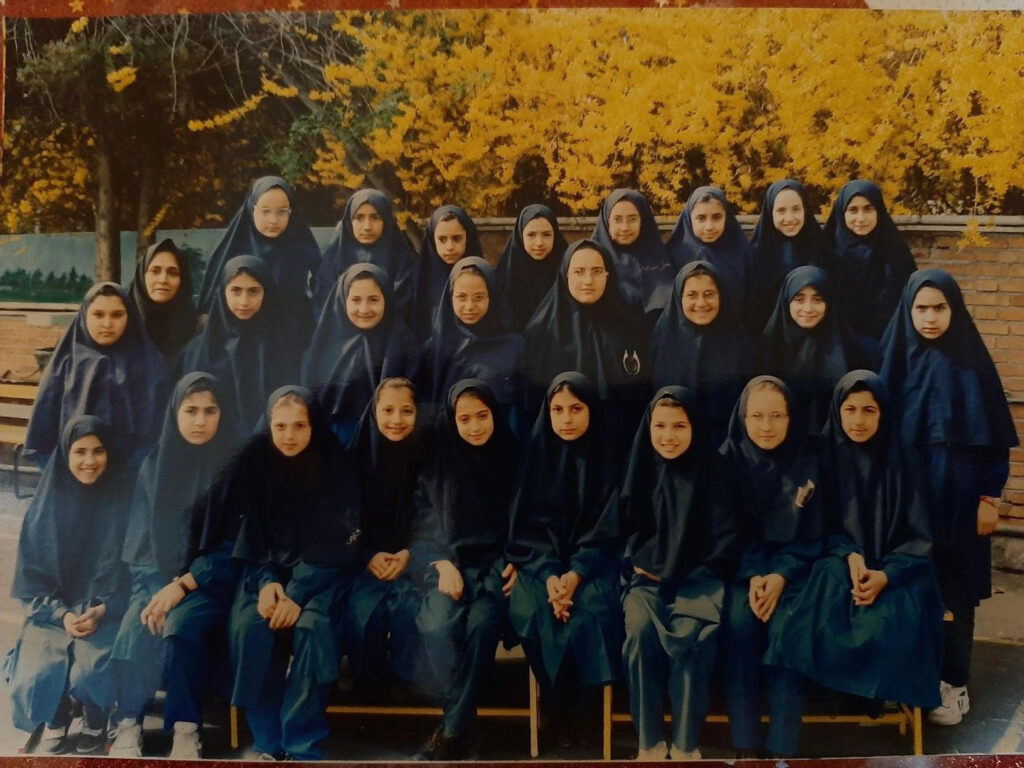
Something that I remember– I have some articles open over here. I remember that the number of girls in universities started getting higher and higher than boys. And around 2001-ish, girls reached 60%. And that was when some chatter and talk about, hey, we have to put a regression… mathematically to adjust the population of students in universities. So some topics, for example, archaeology, computer science, nuclear physics, they started enrolling more boys compared to girls. And since we all entered the university through an exam, that would mean that a girl who had a higher score compared to a guy would no longer enter because that field had reached its quota and now the boys could come in. And I remember that when articles were written, the argument that girls received was, yeah, this will create better husband material. It’s ridiculous. And I don’t know how we just didn’t start screaming. Maybe we were screaming in our heads, but it was just out of this world. When everywhere around you is gaslighting you into believing something, you would think, you know what? I’m going to create a tiny corner for myself and I am going to live my life the best way I can. I believe in a lot of articles you see how Iranian women try to adjust their hijab for fashion elements, do better makeup to enhance their faces, or get educated and assert themselves in society. None of these are thanks to the Islamic Republic. All of the credit should absolutely be given to any and every woman who tried to keep building themselves. So if the statistic is going high, it’s not like anyone was encouraged to become that way. And I want to make sure that this credit is not given to the state, because the Internet came and women had access to blogs and a lot of sisterhood started forming. So now girls knew that, hey, there is this lawyer that if I want a divorce, they can give me better counsel. And then women started understanding that others have the same issues about sexuality, others have the same concerns. And that was actually, I think the early 2000s to maybe 2010. That was the boom of Persian blogs and a lot of bloggers got arrested and Internet censorship came up. But many started realizing, I’m not alone in this, so I’m not being crazy. This does not make sense. And something that I believe the Islamic Republic has masterfully done is to segregate and separate people in different ways. My generation is separated from my parents. Men and women are separated from each other. Ethnic minorities are separated from people in bigger cities. Those who have access to learning English, French, and other languages, they get separated. So they masterfully pitted anyone against each other because we didn’t know how similar we are. I would say even for myself – I have the experience of living in Europe, also on the East Coast, right now I’m in Minnesota – when I saw the protesters in Berlin that were 100,000, I was tearful because I didn’t think we were so many. Well, we actually are! So I think that is the moment that Iranians realized: we do outnumber these people. Our way of thinking is actually more progressive. So why don’t we just stand together in solidarity? We have the numbers. We’re not armed, and they have managed their way to have lobbies in Europe and the States and Pacific countries and Eastern countries like China and Russia. Fine. But we are way too many. I think that is something I am feeling now. And also something else is that other generations care. Because my generation thought, oh, the one before us did a revolution. They don’t know what happened. What can I do? Or the generation after me, they have internet, they’re fine. Now I realize that, no, all this time they were looking at 2009 protests and suddenly the roots under trees get connected to each other and feel lifted up by the energy and enthusiasm. And of course there are days that you feel very down, but someone else is feeling better, so they’re going to lift you up. That’s how I am feeling. And that’s what I think is quite different from previous protests.
AA: So let’s talk about what has been happening for the past ninety days. Roughly at the time of this recording, it’s been roughly three months since this revolution started. Tell us what’s happening in Iran, because like you said, I heard a lot about it at the beginning and now it’s not being covered as much. So I don’t know that listeners really know what’s happening on the ground there right now.
DA: Yes, actually we are at the stage that we can say in the last three months that we have maybe made a big leap of success of, I don’t know, seventy years ahead right now. So this came from Mahsa Amini’s hijab not being “properly” worn, and then maybe a week or ten days after, sorry you can correct me, people were talking about, oh my God, we are going to get rid of this compulsory hijab, or we are going to fight back and finally get rid of this police which is controlling the hijab. And within ten days or two weeks, we all knew, no, we are not going to under-negotiate what we want. What we want is a regime change. It was within not even two weeks and you heard the voice: you need to go, your time is over. So that’s the first thing, which is a huge success. The other thing that somehow was covering it… we have different ethnicities. A lot of the time, because Iran is affiliated so much with Islam, they think we are an Arabic country. With all respect, if you want to compare us, you can compare us to India. We are a country with very diverse ethnicities and cultures and we are always at danger of a regime that is always gaslighting different things. They always talk about these things: oh, the Kurds want to separate themselves and they are after their own authority and they want to build their own country, if these things get out of control, we are going to lose our Iran because we are at the danger of minor ethnic groups. And actually they bombed their own people in Kurdistan. They committed genocide not once and twice in Baluchestan. And this was all to trigger this anger between them, which has always been discriminated in a very sad way. But you know what? They didn’t. They stopped to stand tall against this brutality but they never talked about that, oh you are doing this to me because I’m a Kurd or you are doing this to me because I’m a Baluch. We really built up the solidarity between different ethnic groups like never before. I mean, I cannot tell you how this country is standing so strongly together. The other thing was the solidarity, as Saghi said, between generations. We had such a gap between generations for years and years. One generation is asking, “how did you do this revolution?” And then maybe the other generation is saying “you are not participating, you are thinking about yourself.” And you don’t see yourself as a member of this society. And this gap between generations suddenly changed. The bright youth and brave people on the street; and everyone is really cheering for them. We were thinking they are in their rooms and listening to their podcasts or rap music and they don’t care about anything. They became a hero overnight and we all think, oh, we owe them something. We need to be behind them. And that’s another huge, huge success for us.
I’m not alone in this, so I’m not being crazy. This does not make sense.
The other thing is the solidarity between all different types of groups in society, from artists, from athletes, from women. Of course, it starts with the women but we got a lot of people coming in because everybody was discriminated against at some level and that pain brought us together. And we saw so much support and empathy and engagement from different groups. The other thing that was a huge achievement for us is… Iran inside and outside. They were separated. As Saghi says, the totalitarian behavior of the regime is that they can really separate you. They stop the conversation anywhere that they can. They were blaming us. Oh, my god you left the country, you be quiet, you don’t tell me what to do, come here and live here in these circumstances. And people outside Iran: Oh, my god, how can you live in these circumstances and not say anything? You are 80 million people, only 2 million people are coming out. How are you getting along with this and staying silent? No, now was the time for people inside Iran to go out in the street and for people outside Iran to stand behind this with everything that they can rally, on the street, in more than 150 cities across the world every single week. Every single Saturday we are out sending letters to parliament members, to the media, to the UN and activists and art performances. I have a list of activities that Iranians outside Iran did and the list is endless. I was yesterday at the capital – I live in San Francisco but I could drive only about an hour to go to Sacramento – and people are sitting down in front of the Capitol building in Sacramento because of the execution. The more the level of violence went up… our action plan has also changed. And we got louder and louder. We got 100k people in Berlin together. That was just to show them how many we are. But also we have, I think at this moment, two petitions at the level of 1 million signatures. We got the UN to create the investigation committee against the violation of human rights in Iran. This is not happening every day. I mean, this is really very rare that they get to the next level. This is the highest action that the UN can take. This was all about the pressure that we put on them. We are igniting a revolution. Women, life, freedom in Iran which is going to go all over the world.
The totalitarian regime puts you in the corner, they shut you down, they kill you. They really do everything that they can and you become a person who is either depressed or lost or confused or is leaving the country, for example. But actually we are in control. We are the ones who have control of the game. We are the ones who take the next step, and they need to come after us and react to our acts. Dictators, they come and their best tool is to create fear. It works once. It works twice. The third time, the fear turns to anger because your game is over. I’m not afraid of you anymore. When people experiencing this high level of brutality still come to the streets, they still open their chest and say, “Come. Get me. Kill me. But it is over.” That is enormous! That’s history happening in front of us, Amy.
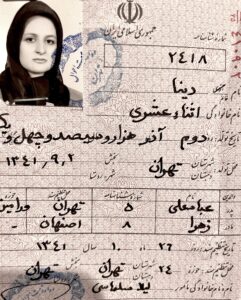
SS: I do want to add something about the new role that a lot of celebrities have taken. So, something that the Islamic Republic has done is that they intentionally and actively removed a lot of Social Studies courses and professors from the universities. Many activists in Iran are currently in prison or have been in prison for the past more than 15 years. Some of them have ideas and thoughts that are a bit behind what people are feeling right now because they have been stuck in prison. Prison kind of freezes you in the state you are in, although they try their best to keep in touch with society. However, when they put you in solitary confinement, how can you imagine what is happening? Something interesting that I was reading about is how actresses both in Iran and also outside of Iran, women in sports, athletes, and also those who have a platform who are celebrities, have now taken the platform that they have available to them to raise their voices. So, in a way, the Islamic Republic managed to remove activists from society. What they didn’t realize was that viewers and influencers have an interactive connection to each other. And when an influencer of any kind, an athlete, an actress, sees how people feel about a situation, they are going to be their voice. Because if not, they are going to lose their platform. And also this is the pain they endured.
So at the very beginning of the protests in Iran, some actresses – actually they’re pretty elderly, I think Katayoun Riahi was an actress who removed her veil and it just went as a domino. Another actress removed her veil. Another one, another one. Yes, all of them got arrested and apprehended and some have been released on bail, some are still in prison. While this was happening, people like Nazanin Boniadi, Nazanin Nour… these are actresses living out of Iran. They can go about their lives, you know, but the connection that they started feeling to the motherland, and because they have seen Iranians and they know about the struggle, they started to echo the voice of Iranians. Nazanin Boniadi is an activist. Her take was, okay, if you are silencing Iranian women, I am the one who’s going to go to the White House and I’m going to be the voice for you. I think something that has been going on is that Iranians have had a lot of representatives in Western media and as speakers. Because of the separation of the United States and Iran, we haven’t had that much knowledge of day-to-day life in Iran. Any movie or series that is somehow about Iran actually gets a large audience because it is quite mysterious to the eye of a non-Iranian. I think something that people are claiming right now is to gain back their voice. So they would say, hey, whatever organization you are, I am going to speak for myself and you no longer can say I am the representative of all Iranians. You can say that you have such and such number of followers, but you cannot say that you are representing all of us. Iran is such a mosaic of different ethnicities, races, opinions, that only an inclusive democracy can put us back together. I think the moment that anyone wants to break from that and wants to rally everyone under a forced umbrella, they are going to receive backlash because of what people experienced in the revolution of 1979. So they no longer justify accepting something just for the sake of being united. They would say: either everyone is being represented or this is not going to work, and as I’m protesting the Islamic Republic, I am going to protest whatever you are suggesting, because you’re not including me and this group and that group.
I think what has been happening is a reclaiming of the flag, of the old national anthem that Iranians used, of the narrative. You know, I think this is something that has been taken from Iranians for so long. And another version was shown to the media, and Iranians were so tired of being gaslit for so long, you just feel like I don’t want to deal with this trauma, if I’m out, I don’t want to deal with it. Those who are in Iran are never going to hear me so let me just have my tiny corner. After forty years, we are claiming this back and this on its own is a cause to celebrate. And now that Iranians have managed to get some actionable wins, such as the United Nations investigative commission, such as Iran being ousted from the United Nations Status of Women Group… I think these are tiny wins that really lift you up and you feel like this learned powerlessness, this learned hopelessness is being broken down. It feels like, I have agency in what I want and how I can change the world. So let us keep pushing and asking for what is our right.
AA: I’m so inspired hearing about these achievements that have happened, and especially as you point out, in such a short time. And I’m wondering if you could talk a little bit about the dangers that these protesters face every day when they go out to protest.
SS: Dangers are imminent and also horribly consequential. It can result in death. The latest numbers that I have from December 7th say that more than 600 people have been killed, 60 of them children. And more than 18,000 people based on Iran’s state media have been imprisoned. So we are dealing with a lot of people who risk their lives as they go to protests. And right now, Iran’s parliament has asked for the highest punishment, which is execution. And Iran’s judicial system, with the support of the supreme leader, Ayatollah Khamenei, is issuing death sentences to people. One of the slogans that I heard in our gathering last week was, “USA, remember we told you in November, Iran issues death penalty to those who ask for liberty.” This is something that Iranians have been talking about. And there are reports, for example, from CNN, a great investigative report of how women and also men are being raped in prisons, how those who are imprisoned keep getting moved between different cities. So it is very difficult to keep track of who is where and who got what sentence. I think something that we have to keep in mind is that this is an authoritarian and also totalitarian regime and they feel powerless and they keep attacking. Something that other countries have to stand for firmly is the right of Iranian people to protest their fundamental right to life. And they have to keep demanding that Iranian protesters remain healthy and alive. So there is a lot of danger. IRGC and security forces come to schools and get kids and bring them out. Every day we hear about someone being kidnapped or a body being found. It is absolute chaos by the hands of the government. And yet people go and protest. And when I see that, I’m in awe. I think my role is to echo their voices more and more and raise awareness about the dangers that they face.
DA: There are a lot of petitions out there. If you look up on change.org, please participate in our petitions. It really raises our voice. This is the minimum you can do. Also, we want to ask you to ask the media. We don’t get coverage in the US. I’m jealous when I hear from my German friend how much coverage they have. They constantly have breaking news in local news. And when we go out every Saturday in San Francisco and we call ABC News, we call local media, they tell us every week is the same thing. We don’t come out for the same thing. They are so rude. It’s not every week the same thing. There are so many things happening every day in Iran, but we know that there is more than regular media coverage at this moment, especially I emphasize in the US, they don’t cover us. Please ask your media, please stand tall with us. Please come to our rallies in every city that you live in. We have Saturday rallies and most of the time, 90% of the chants are in English. We would love to have you among us and have your support. And our call to action is: we appreciate you, outside Iran, the non-Iranian community. They really gave enormous support… from Oprah Winfrey and Kim Kardashian, are you freaking kidding me? She was talking about Mahsa Amini. And so many music concerts across Europe and the world. We are so appreciative of you. And for all the congressmen and women, those who have a higher position and stand tall for Iranian people, you will make your name stay in history. And we would love to ask the others to really consider. We know that we are the winners. We know that we are changing history. If you want to be on our team, this is your time. Don’t miss that. History is watching you.
Dangers are imminent and also horribly consequential. It can result in death.
AA: I so appreciate hearing about all of these and what I’ve heard from both of you is that some of the action items that listeners can take are to contact our media so that we have local and national coverage of the protests and the revolution. And to also participate; we can look up and see where events are happening in our area. I’m wondering if you have any other action items that enable us, because I know that these listeners are gonna be feeling so much empathy and compassion and a real desire to help. So tell us what we can do.
SS: Absolutely. I would strongly encourage all journalists in the US, outside, to do investigative journalism work. Talk with Iranians. Start digging: what happened in ‘79, what is happening right now? Try to talk more and more with Iranians instead of looking for experts, listen to stories. I think the power of storytelling is something that has been missing. Also you can search on Twitter and Instagram for #MahsaAmini. And a lot of posts will pop up. There is a group called Action for Iran and they very frequently put out different action items, but what I would suggest is to search for #MahsaAmini, Action for Iran, and see what news pops up, what action items are popping up.
DA: And also adding to Saghi’s point, we are calling on artists and journalists and influencers.
AA: Yes, please can you tell us about your quilt project?
DA: Yeah, as you mentioned before, our nonprofit – Iranian Women in Network, our website is iwiniwin.org – our mission statement says clearly: we want to empower women through art. And we believe that one of the ways that we can do that, as Saghi says, is sharing stories as one of the most powerful ways to connect to each other. And our call is very simple: we are asking everybody across the globe to come out with a piece of canvas because we want to make a quilt. We ask for a 12 inch by 12 inch canvas fabric with whatever to express yourself around the slogan “Woman, Life, Freedom.” I always bring this simple example: let’s make a tree with a bird on it singing “woman, life, freedom!” That’s it, you got it! So the requirement is to express yourself on a 12×12 inch canvas fabric. Look at our website. There is an address for you to send it to us; even if you are outside the US you can send it to us. And we are making them into quilt banners. We are inspired by other organizations– I think one of the largest ones, I’m so grateful for them, they did a great job, is the AIDS Memorial Quilt. They made it to 48,000 banners. And also if it is a digital work you have the option to send an image to us. Everything is on the website. If you like this project and want to be an advocate for it and be in touch with us, because we are reaching out to art teachers at schools, universities, yoga classes… reach out to your communities. If you like the idea but you think you are not artistic, you can reach out to any group you are a part of and I promise you there are at least three people who will want to participate. And we like to have your story among the stories of Iranian women. As Saghi says, we are more alike than different. This is all about being human, this is all about living with dignity, this is all about claiming your basic human rights. Thank you very much for the opportunity, Amy, that I could add on to this. And one more time the website is iwiniwin.org.
AA: I’m so excited to participate in that quilt and I’m going to talk to my kids and their friends, and you’ll be getting squares from us!
DA: Exciting! Thank you!
AA: Thank you to both of you. I learned so much from you and I’m so inspired and so grateful for your time today. Again, Dina Asna and Saghi Saghazadeh.
SS: Thank you so much, I really appreciate it. Thank you for the work that you’re doing, it’s fantastic.
AA: Thank you so much.
I have agency in what I want
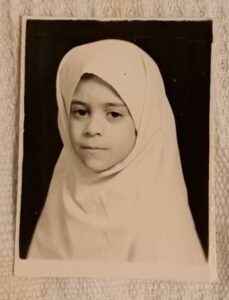
and how I can change the world
Listen to the Episode
&
Share your Comments with us below!

